When it comes to brand architecture and hierarchy, there are many structures to choose from.
House of Brands and Branded House are without question, the most prominent.
But what’s the difference between House Of Brands vs Branded House?
Well, it all comes down to the relationship between the parent or umbrella brand and the sub-brands that sit underneath it.
In this article, we’ll explore the difference between the two brand hierarchy structures, the strategic considerations and some of the best examples.
House Of Brands vs Branded House?
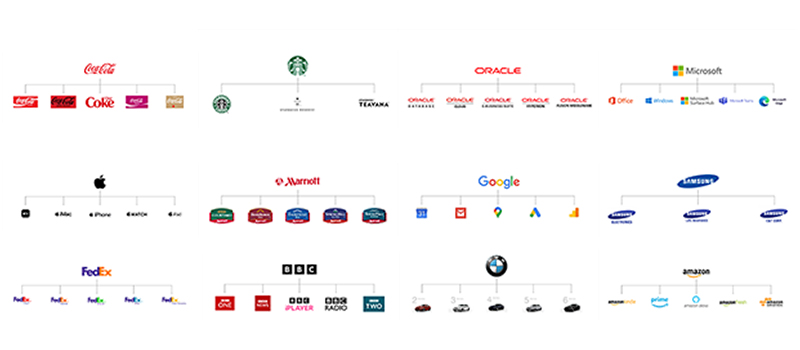
Branding strategies aren't a one-size-fits-all deal.
Two of the most common ones are the house of brands and the branded house.
They might sound similar, but believe it or not, they're as different as night and day.
Here's why.
PRO Brand Strategy BluePrint
Build Brands Like A Pro Brand Strategist

House of Brands Definition
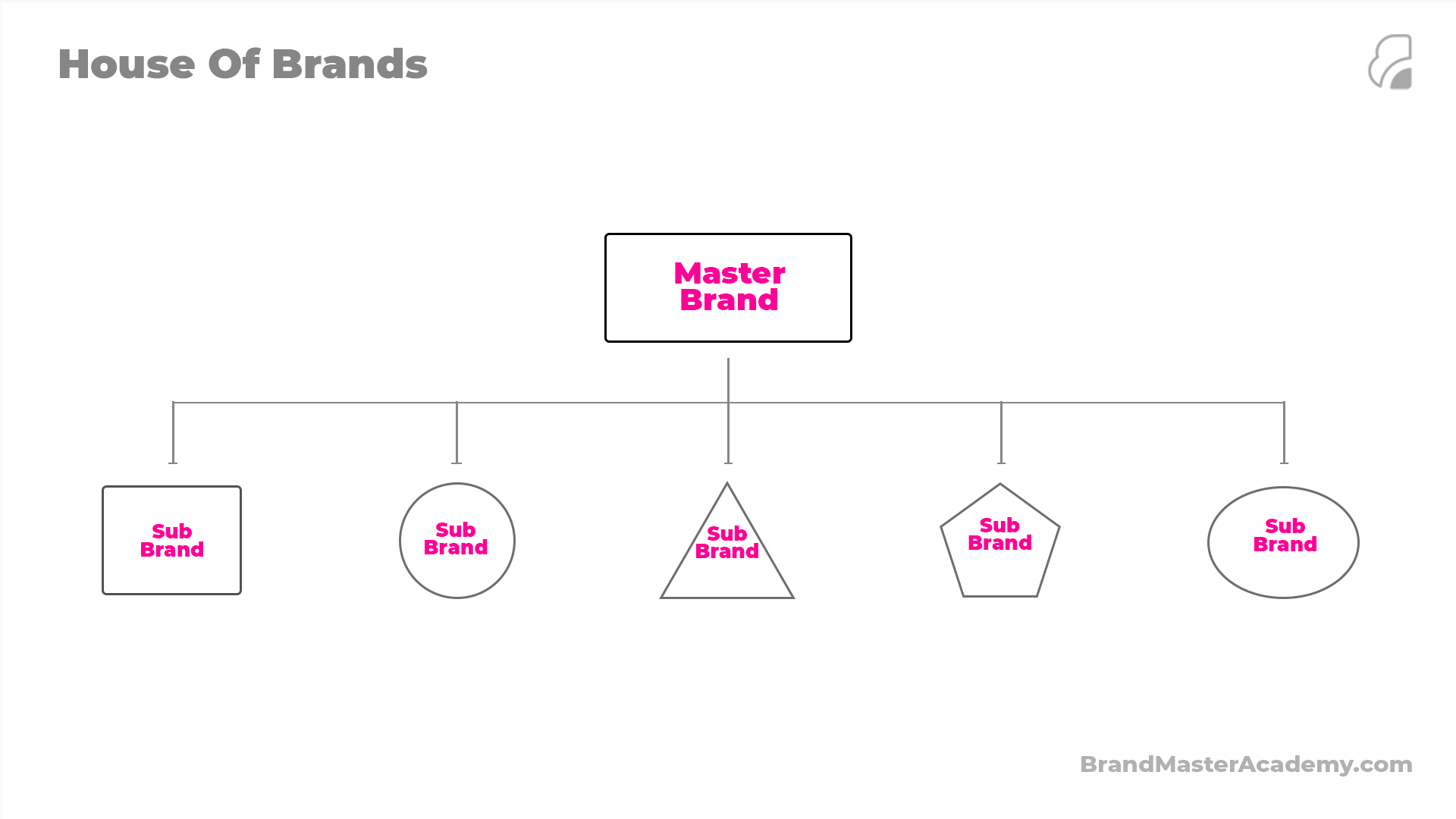
In simple terms, a house of brands is like a family tree.
Picture this: The parent company owns multiple brands, each with its distinct brand voices, own identity, target audience, and unique selling proposition.
This strategy allows each brand to cater to unique target audiences and a different demographic, almost as if each brand is its own standalone company.
Branded House Definition

On the other hand, a branded house is more like a single-child family.
In this case, the parent company is the main brand, and all its products endorsed brands or services carry its name.
This approach allows the brand equity of the parent brand to extend to all the sub-brands or new products.
Why Is A House Of Brands Important?

On the flip side, a branded house strategy ensures a strong, unified brand identity.
It's like putting all your eggs in one basket, but with a safety net.
This strategy leverages the brand equity of the parent brand, making it easier to launch new products or even new services by springboarding of the pre-existing market reputation.
It also simplifies marketing efforts since all products fall under a single brand.
5 Characteristics of a House of Brands
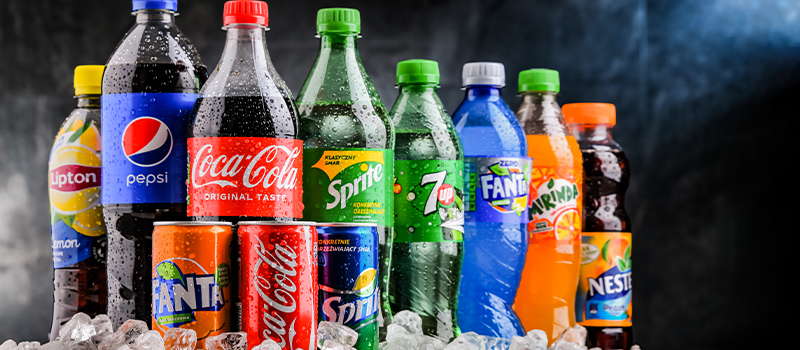
Diverse Target Audiences: One of the main characteristics of a House of Brands is the ability to cater to multiple, diverse audiences. Each brand within the house can be specifically tailored to meet the needs and preferences of a distinct target market.
Individual Brand Equity: Each brand in the House of Brands builds and maintains its brand equity. They are recognized and remembered individually by consumers, and their success doesn't rely on the reputation of the parent company.
Separate Marketing Strategy: In a House of Brands, each brand typically has its unique marketing strategy and campaign, independently promoting its unique value proposition. They may even compete against each other in the market.
Operate Independently: Each brand in the House of Brands typically operates independently, with its own goals, strategies, and bottom lines. They may have separate management teams and business units within the parent company.
Brand-Specific Risks and Failures: If a brand under a House of Brands faces a scandal, failure, or any other issue, the damage is often contained within that brand. It typically doesn't significantly impact the parent brand's reputation or the performance of the other brands in the house.
Explore Brand Strategy
Programs & Tools
5 Characteristics of a Branded House
Unified Identity
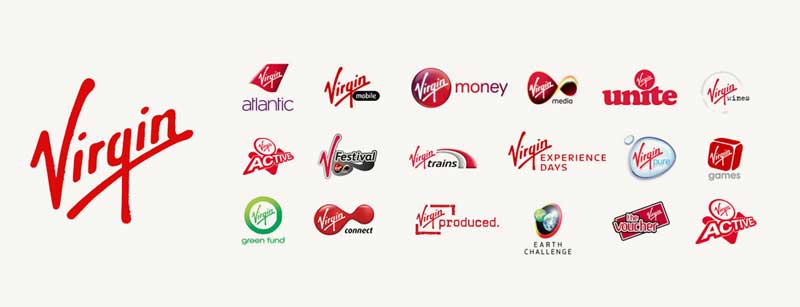
Unified Identity: All products or services carry the parent brand's identity, providing consistent messaging across all offerings. In this architecture, all the brands under the parent share a common form.
Strong Brand Equity: Each new product or service adds to the reputation and recognition of the primary brand, contributing to brand equity.
Simplicity: Managing one brand's marketing strategy and messaging is straightforward compared to juggling many brands. A single brand can also avoid brand confusion amongst consumers.
Resource Efficiency: With just one primary brand to build and promote, resources are used more efficiently. This focused approach strengthens the parent brand's reputation.
Consistency: The primary brand provides a consistent experience across all its offerings. This reliability creates relationships with consumers, bolstering the brand's strength over time.
House of Brands Examples
Estée Lauder Companies

A key player in the beauty industry, Estée Lauder owns numerous brands, each catering to different audiences and needs.
From luxury brands like Estée Lauder itself and Tom Ford Beauty to more affordable alternatives like Clinique and MAC Cosmetics, they offer distinct products and messaging, all under one parent company.
Volkswagen Group
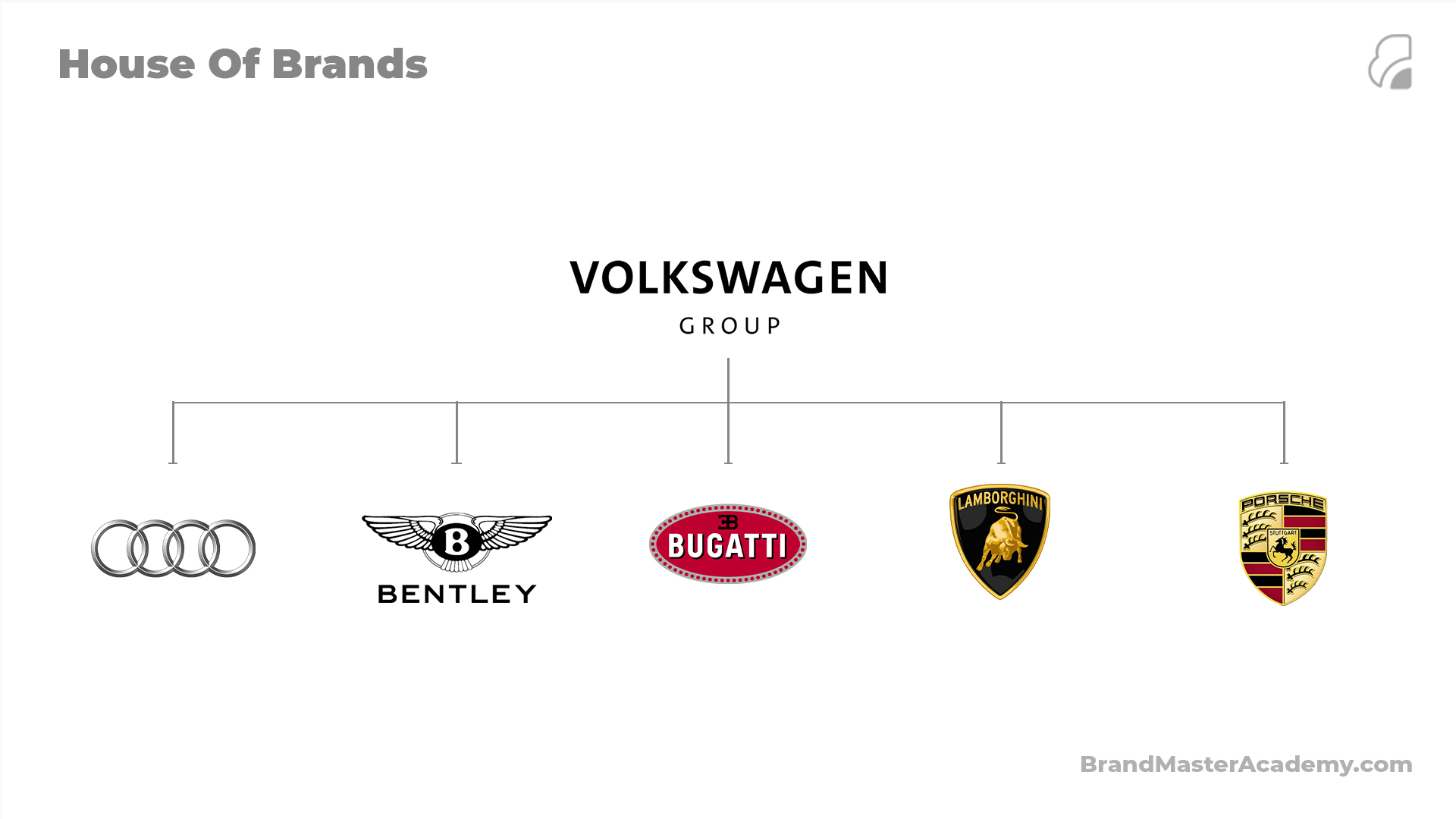
This automobile giant operates a House of Brands architecture, with each brand like Audi, Bentley, Skoda, and Porsche appealing to different consumer groups.
Each brand has its specific market position, from luxury to affordable, allowing Volkswagen to cater to a broad range of market segments.
Pepsico
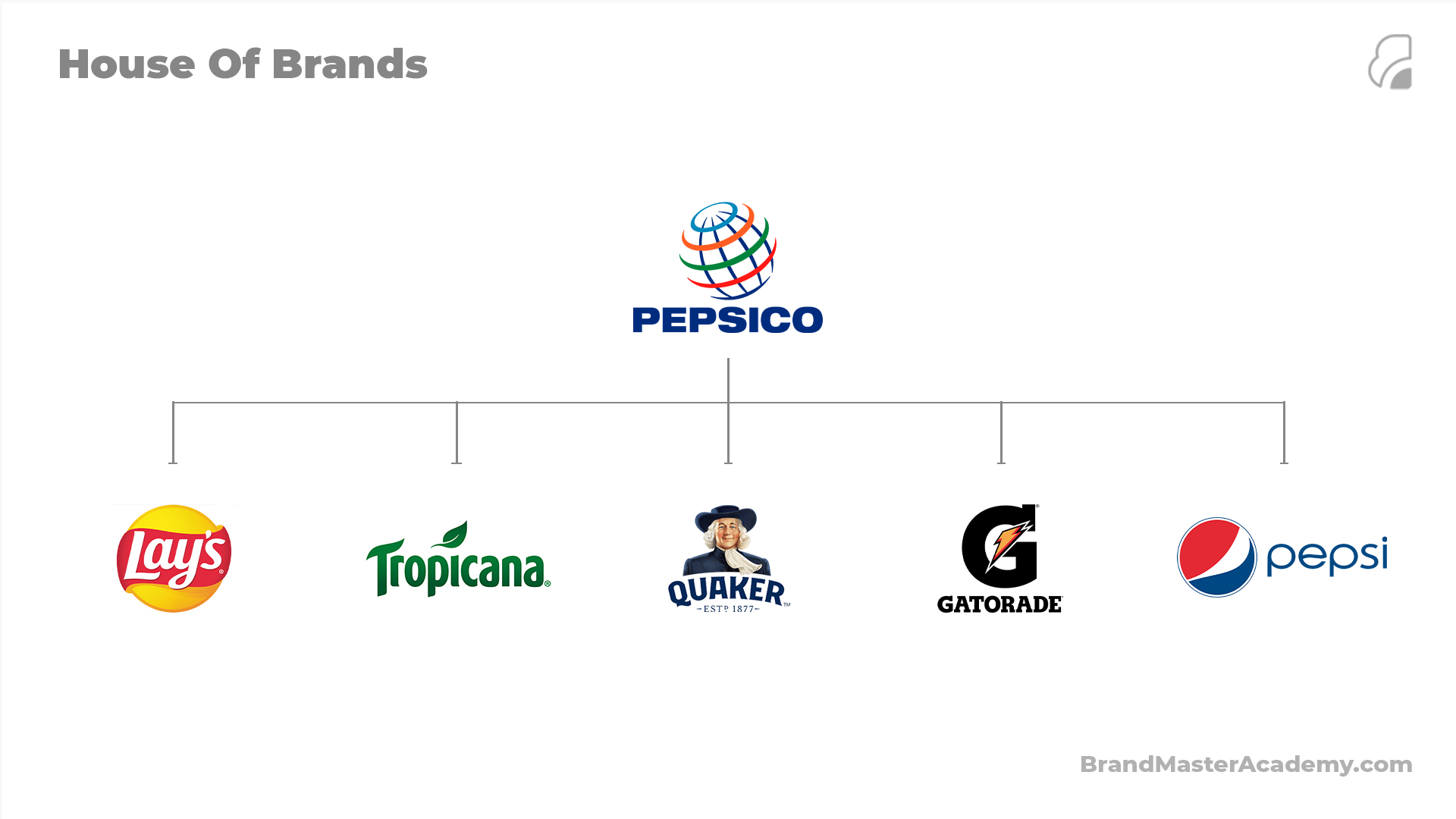
Known for its namesake cola, Pepsi, Pepsico owns a plethora of food and beverage brands.
Each brand, such as Lay's, Tropicana, Quaker, and Gatorade, operates with its own identity and strategy, targeting different market segments and preferences.
Unilever

As one of the world's leading suppliers of Beauty & Personal Care, Home Care, and Foods & Refreshment products, Unilever operates under a House of Brands structure.
They own over 400 brands, including Dove, Lipton, and Ben & Jerry's, each of which has its unique brand voice and target audience.
This strategy allows Unilever to meet diverse consumer needs and preferences across a broad market spectrum.
Gap Inc.
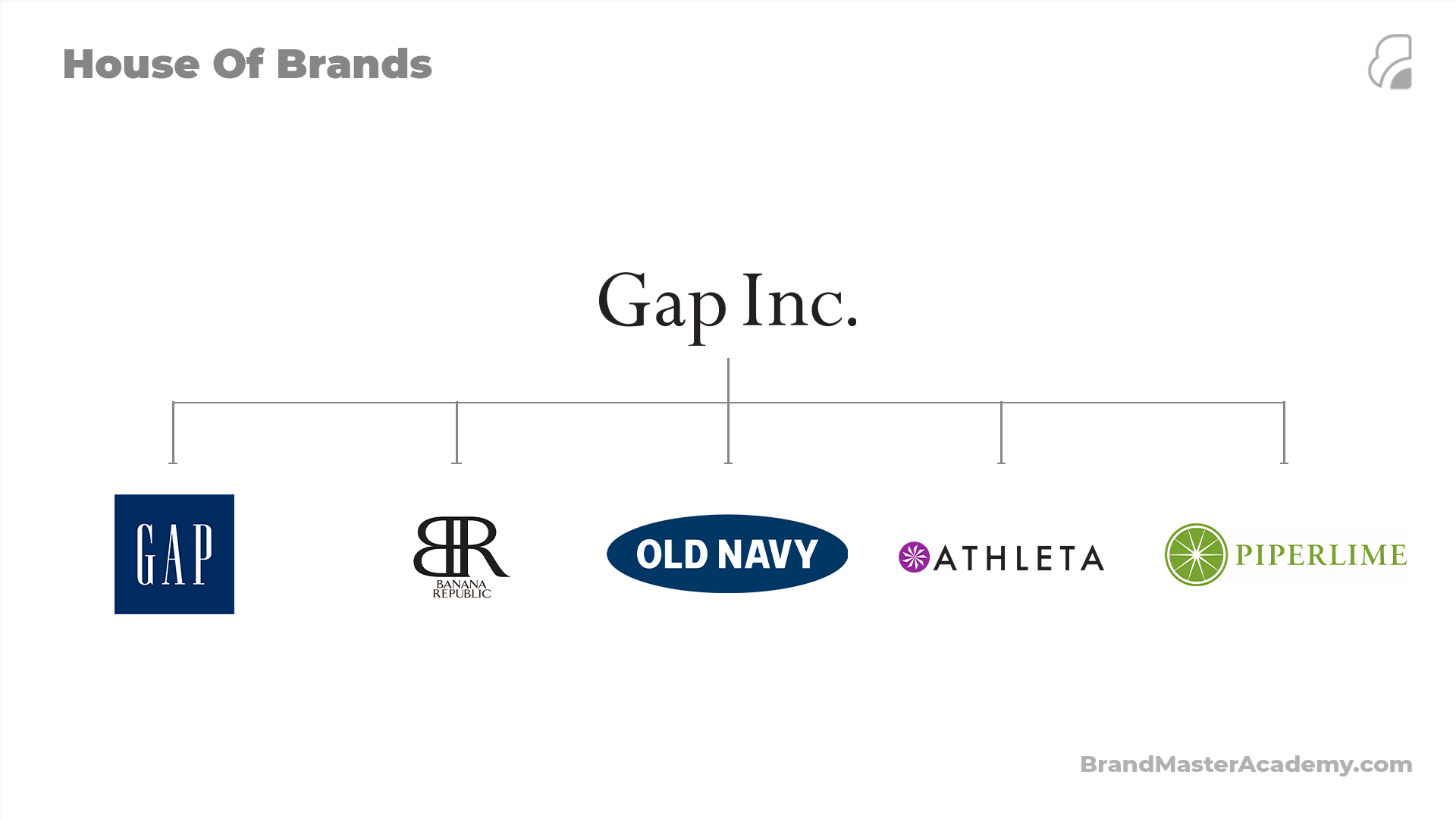
This global retail company operates several distinct brands such as Gap, Banana Republic, Old Navy, Athleta, and Intermix.
Each brand targets different audiences based on age, fashion style, and price sensitivity.
For example, Old Navy focuses on family-friendly and budget-conscious apparel, while Banana Republic targets the higher-end, professional market.
This House of Brands approach allows Gap Inc. to cater to a wide variety of consumer segments.
Branded House Examples
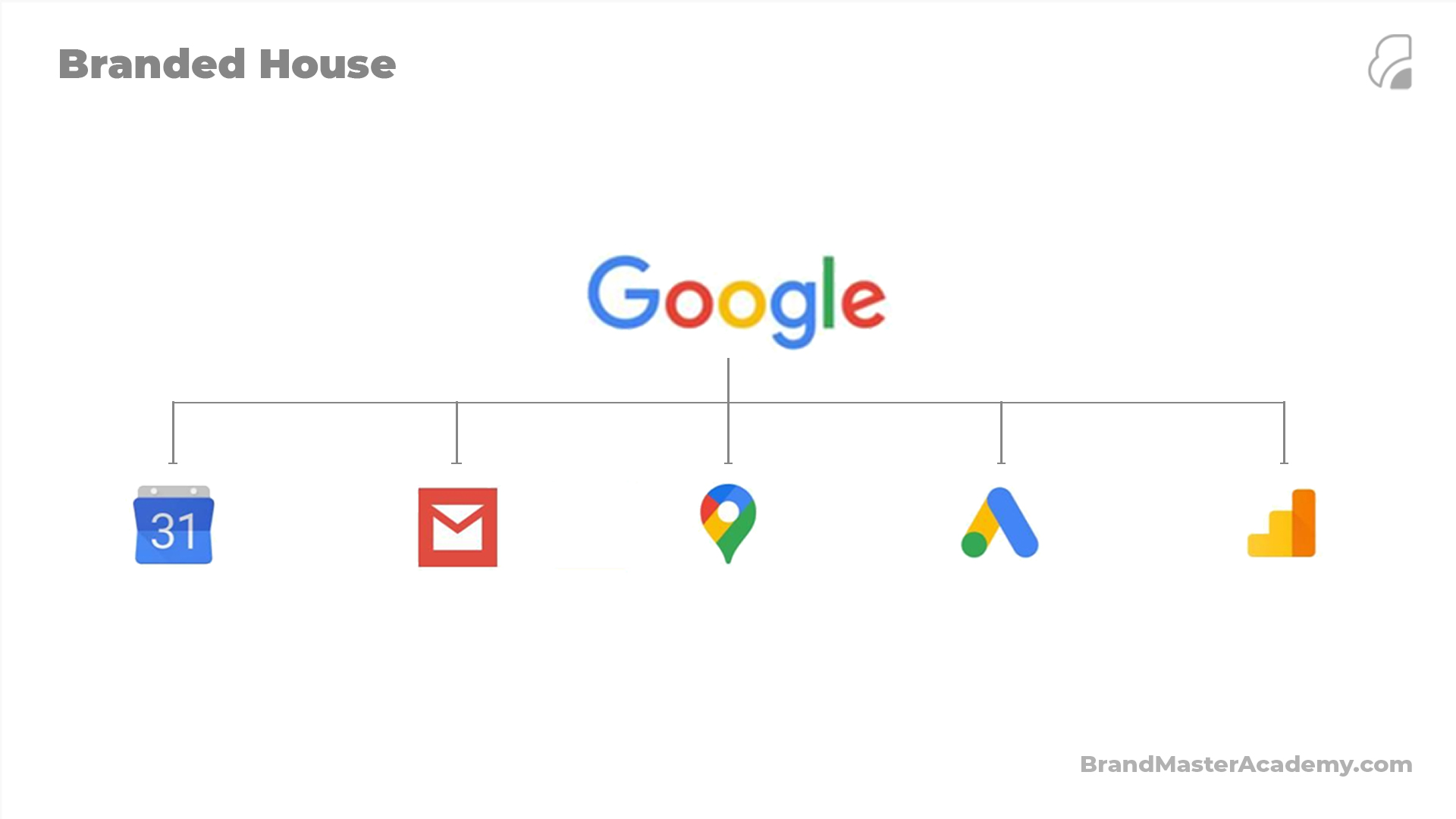
All its services, like Google Drive, Google Calendar, and Google Docs, share the Google brand, contributing to high visibility and strengthening the parent brand's reputation.
FedEx
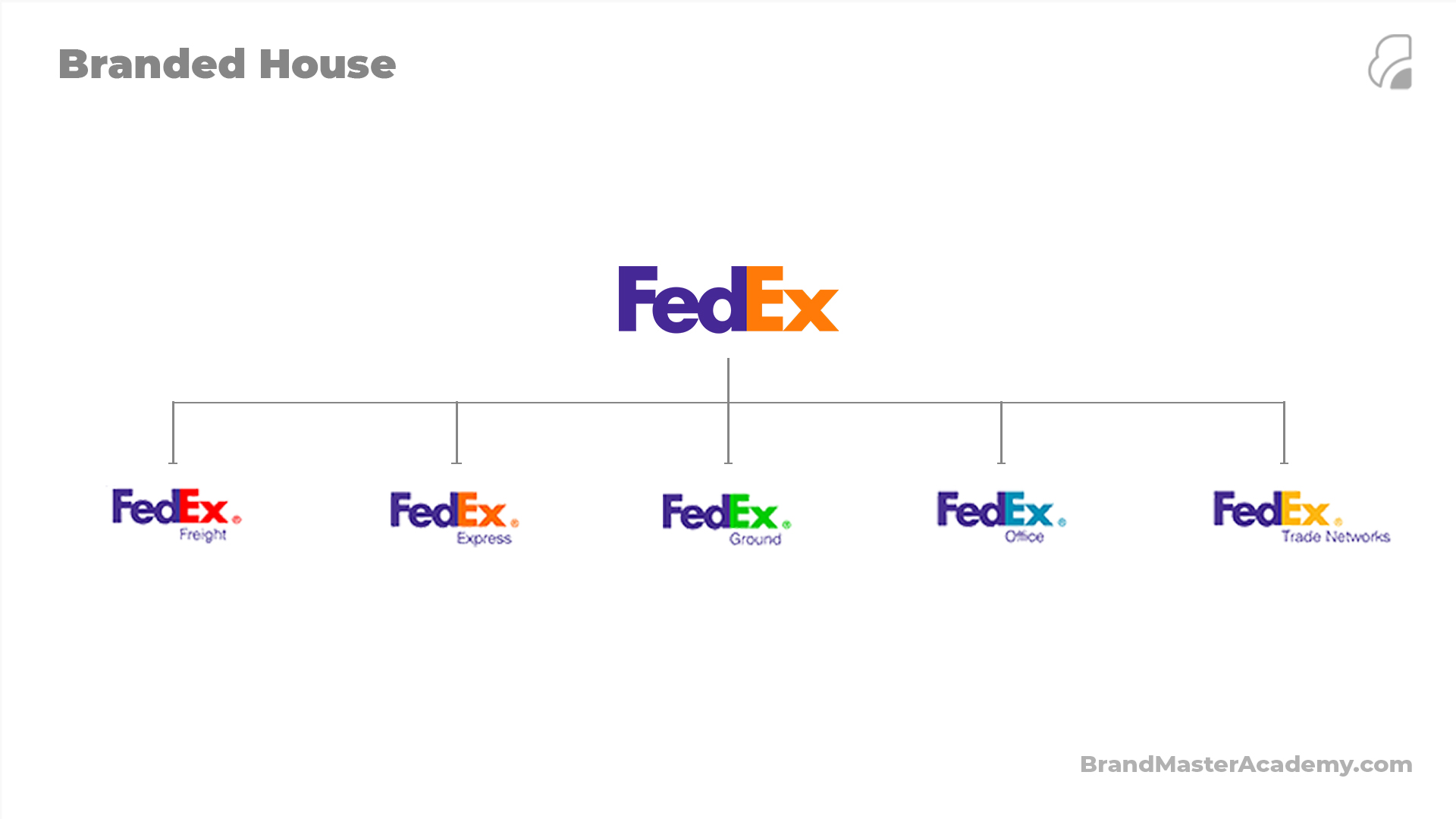
FedEx follows a similar approach with its services such as FedEx Express, FedEx Ground, and FedEx Freight, all tied to the strong brand, FedEx.
Despite offering multiple services, they all contribute to the single, master brand.
Amazon
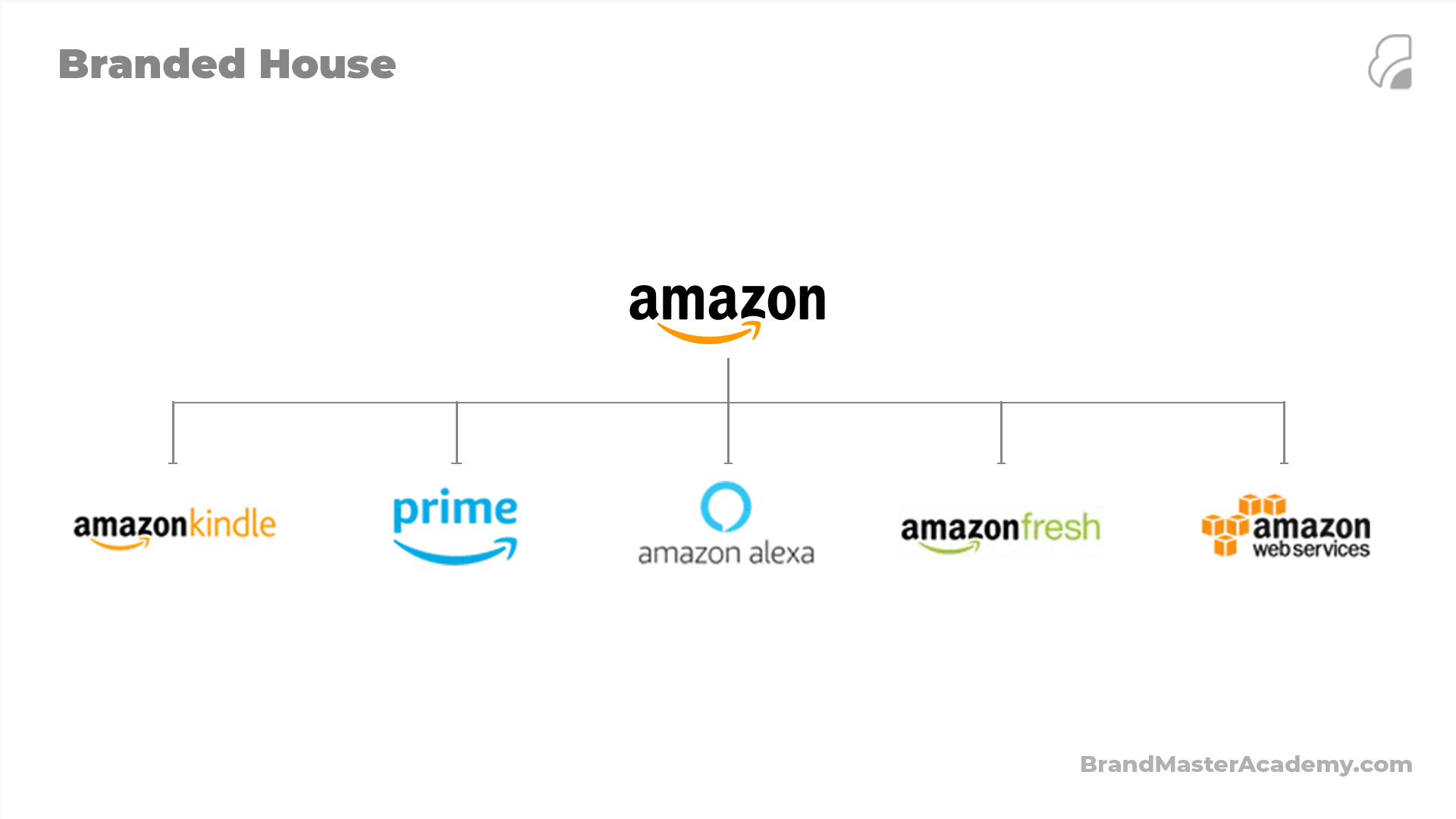
Amazon, from Amazon Prime and Amazon Music to Amazon Web Services, Amazon follows a Branded House model.
Each product or service is directly connected to the parent brand, creating a strong and unified company image.
Starbucks
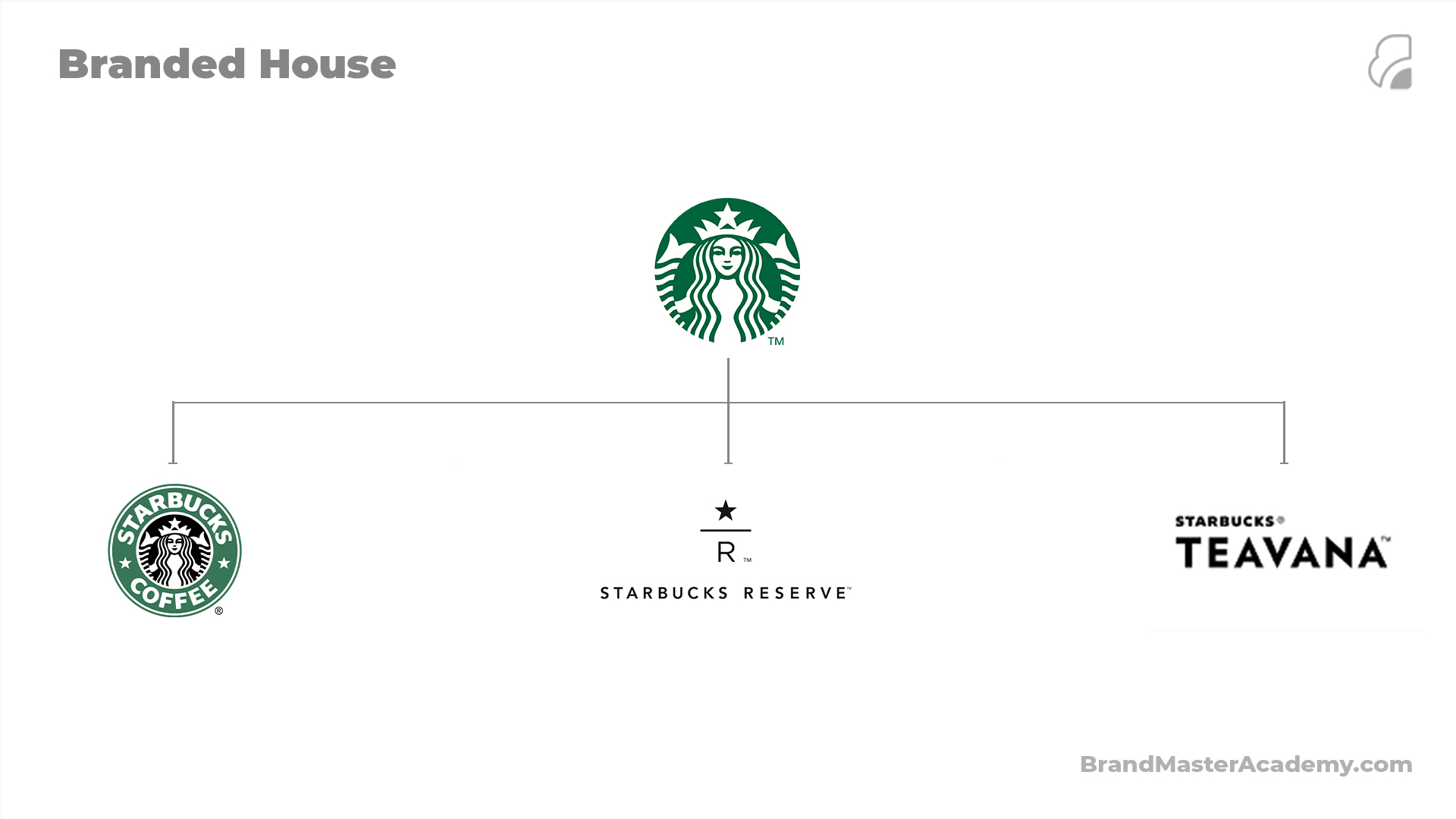
Starbucks, whether it's Starbucks Coffee, Starbucks Reserve, or Starbucks Teavana, every offering is closely tied to the Starbucks brand.
This architecture ensures consistency and leverages the brand equity of Starbucks across all offerings.
BMW

BMW, despite having different product lines and models, BMW operates under a Branded House strategy.
From the 3 Series to the 7 Series and its i-Series electric cars, all products directly relate to the primary BMW brand, maintaining its prestige and brand promise.
Benefits of Both Strategies

Both house of brands and branded house tested brands strategies come with their own set of advantages:
House of Brands: This strategy allows for targeted marketing of individual brands, with each brand tailored to a specific audience segment.
It also limits risk – if one brand fails, it won't affect the parent brand's reputation. Furthermore, it provides the flexibility to experiment with different brand identities and positioning strategies.
Branded House: This strategy builds a strong, unified brand with streamlined marketing efforts.
It capitalizes on the parent brand's equity to boost new products or services. Moreover, it fosters customer loyalty and recognition as all products come under a single trusted master brand.
Also, the cost of marketing is lower as all efforts are centered around promoting one main brand instead of multiple.
The Question of Hybrids
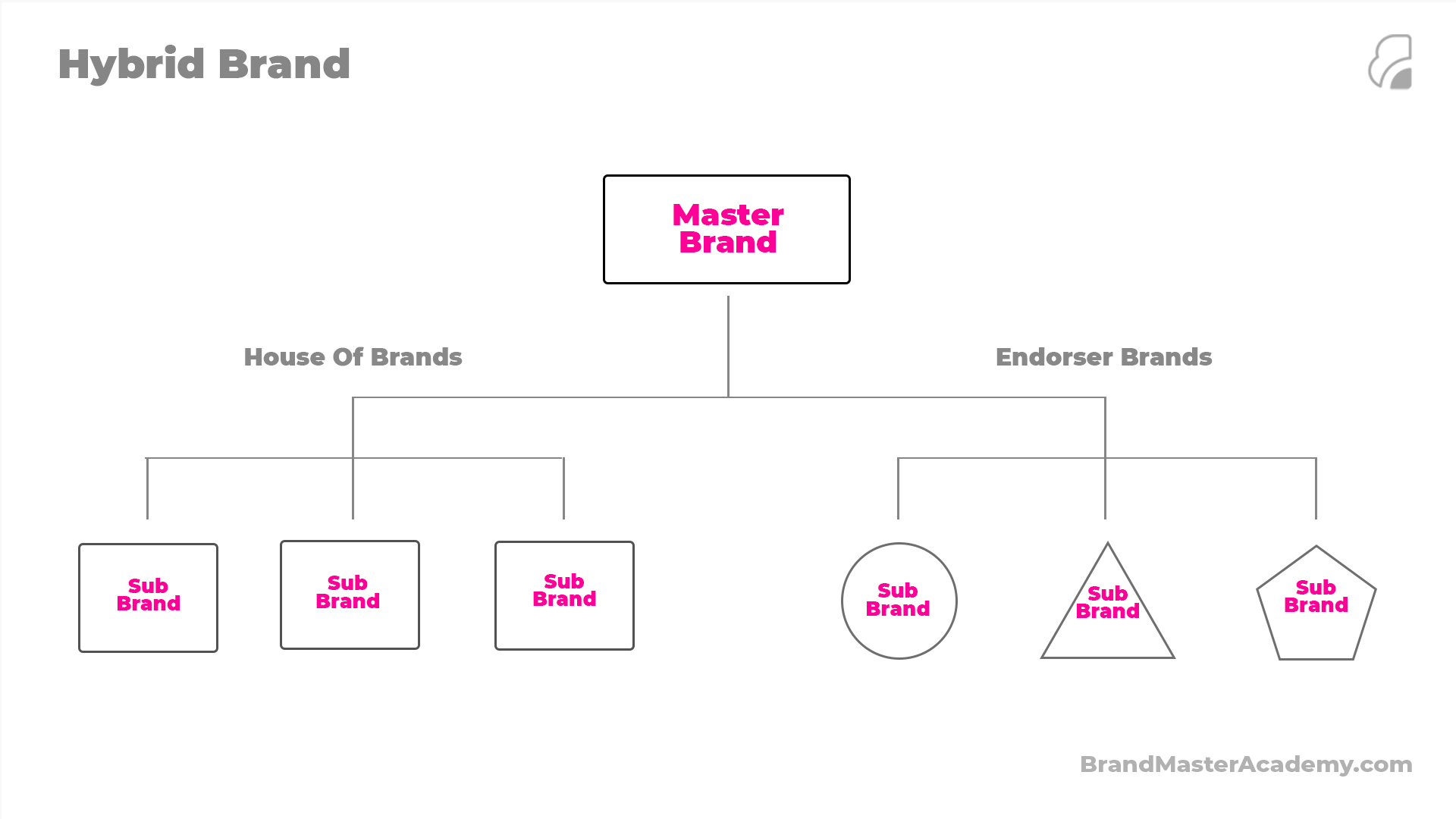
Sometimes, sticking strictly to a house of brands or a branded house approach model isn't the most strategic option.
This is where a hybrid brand strategy comes into play.
This model offers the flexibility of the house of brands approach while maintaining the brand unity found in a branded house model.
It's essentially the best of both worlds.
In a hybrid strategy, the parent brand shares its identity with some (but not all) of its smaller sub brands or-brands.
These sub-brands have their unique attributes but are visibly tied to the parent brand.
This way, the company benefits from both individual brand identities and the parent brand's reputation.
A hybrid strategy is particularly effective when a company wants to enter new markets or demographic segments without diluting the parent brand's equity.
It's also a good approach when a company wants to highlight specific features, benefits, or uses of its products, which might be challenging under a strict branded house strategy.
Hybrid Architecture Examples
FedEx
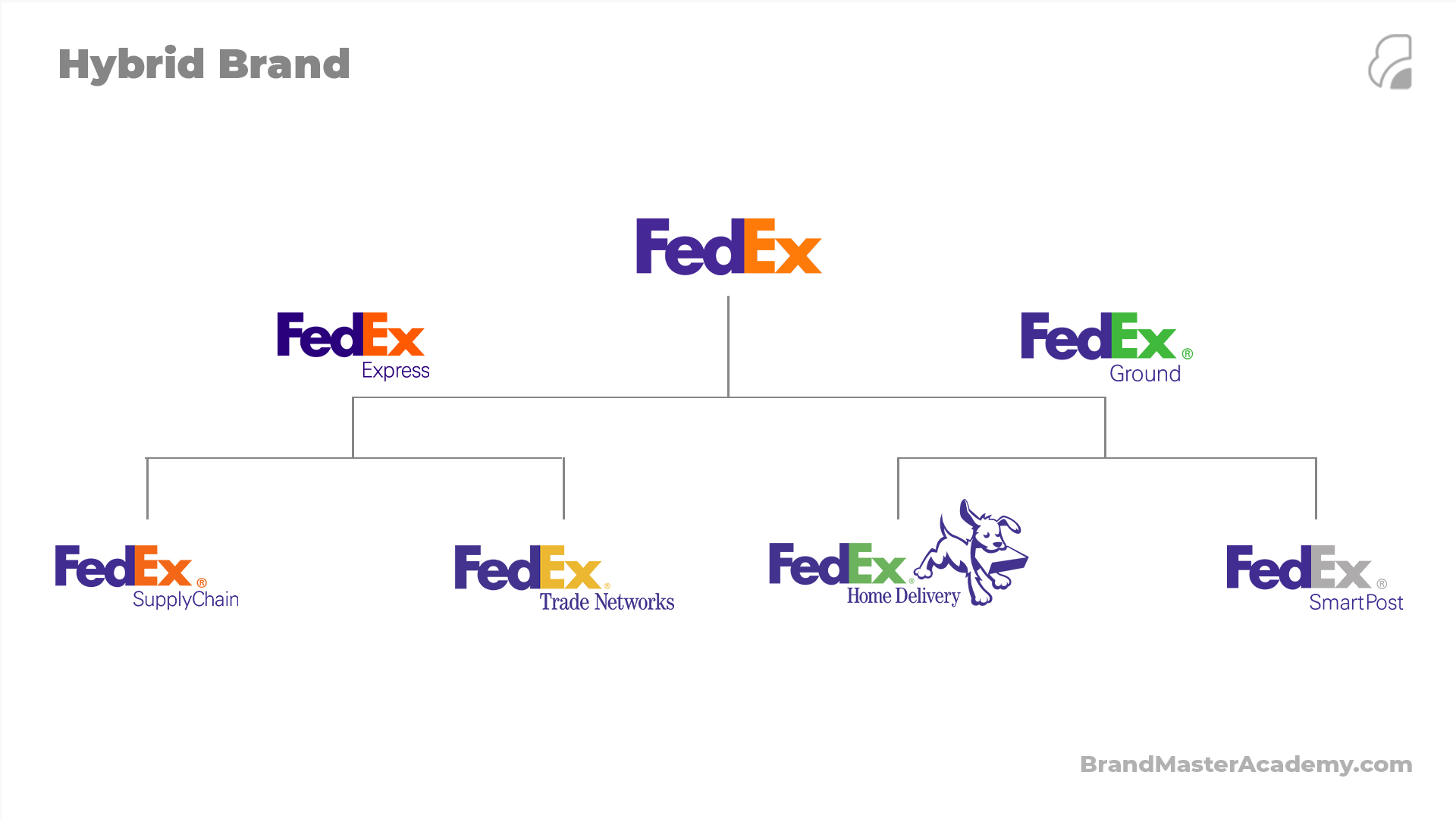
FedEx employs a hybrid strategy by using sub-brands like FedEx Express and FedEx Ground.
The parent brand, FedEx, provides an umbrella of trust and reputation, while the sub-brands Express and Ground indicate the unique services they offer.
So, even though all the brands and services are different, they are visibly tied together by the FedEx brand, maintaining unity and leveraging brand equity.
Marriott
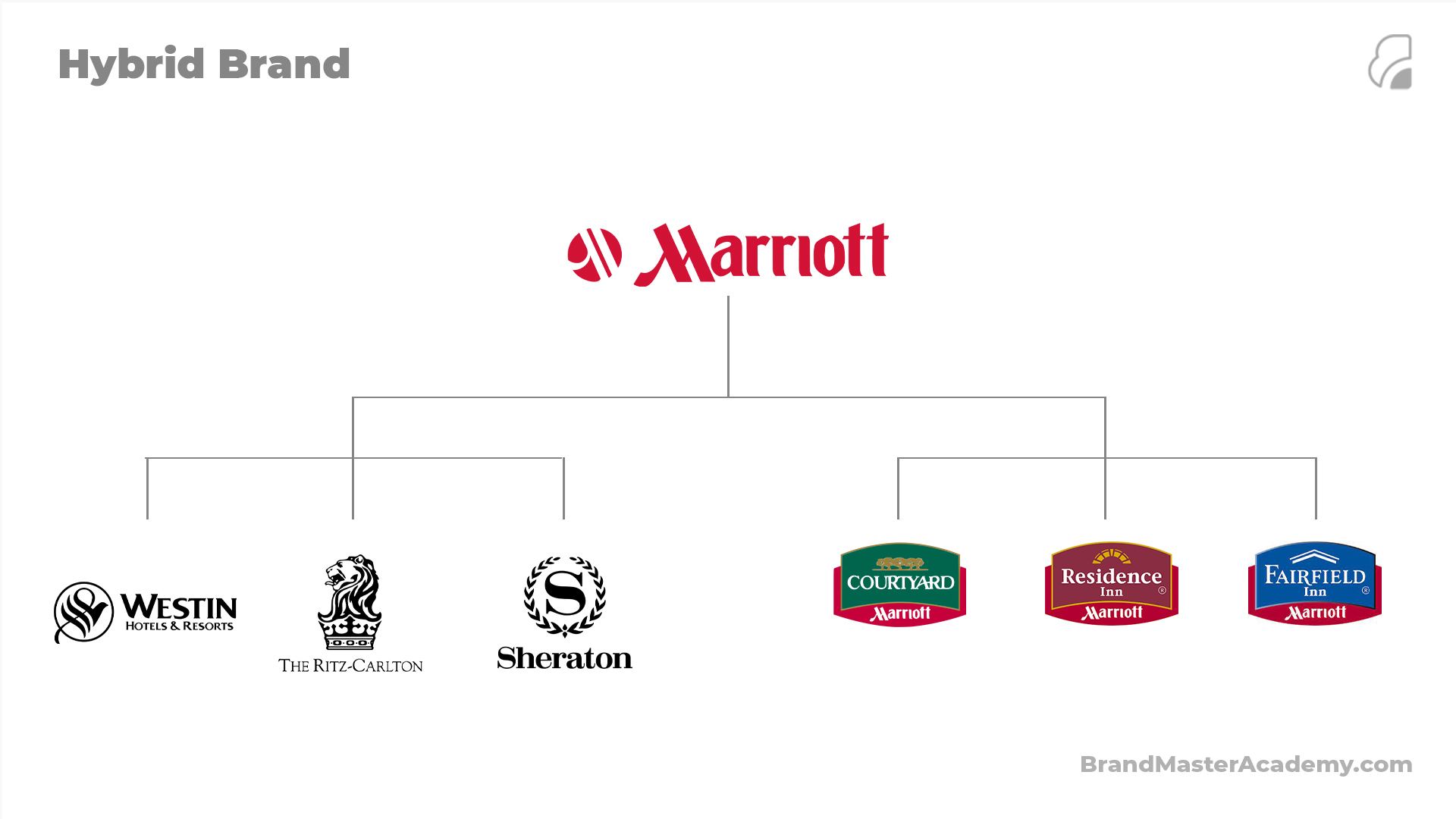
Another good example is Marriott. It's a renowned brand in the hospitality industry, known for its luxury hotels and resorts.
But Marriott also offers different experiences through its sub-brands, like the Ritz-Carlton for high-end luxury, Courtyard for business travelers, and Moxy for budget-conscious millennials.
Each sub-brand targets a specific market segment but is tied to the Marriott brand's reputation for quality service.
Adopting a hybrid brand positioning strategy can be challenging, as it requires a delicate balance between diversification and unity.
However, if executed correctly, it can offer businesses the flexibility to explore new markets and opportunities while maintaining a strong, unified brand image.
Marketing Considerations

In the end, your choice between a house of brands and a branded house strategy depends on your marketing goals.
Consider factors like
Target audience
Brand equity
And the products or services you offer
Over To You
Choosing the right brand architecture strategy can make or break your brand.
Whether you opt for a house of brands or a branded house, what matters is that your strategy aligns with your brand's identity, values, and diverse audiences.
FAQs
1. What is a House of Brands?
It's a strategy where the parent company owns multiple brands, each with its own identity and target audience.
2. What is a Branded House?
It's a strategy where the parent company is the primary brand and all products or services carry its name.
3. What is a Hybrid Brand Strategy?
It's a strategy that combines the benefits of a house of brands and a branded house, offering flexibility and a strong parent brand.
4. Why would a company choose a House of Brands?
A company might choose a house of brands to target different markets without diluting the parent brand's image.
5. Why would a company choose a Branded House?
A company might choose a branded house to maintain a consistent brand identity and leverage the brand equity of the parent brand.
On-Demand Digital Program
Brand Master Secrets
Make the transition from hired-gun to highly valued brand strategist in less than 30 days. The systems, frameworks and tools inside this comprehensive program are all you need to level up.







